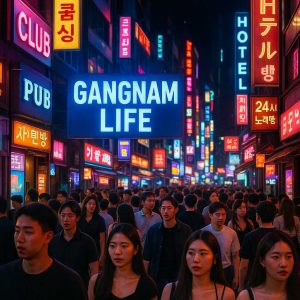 In Gangnam, the day rarely ends when the sun goes down. Cafés stay open late, restaurants glow under soft light, and music seeps from bars tucked into side streets. And for some pet owners, the night doesn’t stop after the walk—many unwind at lively spots like 하이퍼블릭, where the city’s energy continues long after the dogs are asleep.
In Gangnam, the day rarely ends when the sun goes down. Cafés stay open late, restaurants glow under soft light, and music seeps from bars tucked into side streets. And for some pet owners, the night doesn’t stop after the walk—many unwind at lively spots like 하이퍼블릭, where the city’s energy continues long after the dogs are asleep.
The Dopamine Effect: Chasing the High of Anticipation
At the heart of nightlife’s appeal is dopamine — the brain’s chemical of motivation and reward. Dopamine doesn’t just fire when we get what we want; it spikes before we do, during the anticipation of pleasure. The hours leading up to a night out — choosing an outfit, messaging friends, watching plans unfold — are prime time for dopamine release.
That chemical anticipation explains why nightlife feels exciting before it even begins. Each new song, each unexpected encounter, each burst of laughter keeps the brain guessing, triggering small waves of reward. Clubs and bars are built to sustain that tension. Flashing lights, shifting beats, and the hum of the crowd all create a pattern of sensory unpredictability — exactly what dopamine loves.
Unlike other dopamine-driven behaviors that can become isolating (such as scrolling through social media), nightlife provides a unique collective experience. The pleasure loop is shared. When the beat drops and the crowd reacts together, dopamine release becomes social, not solitary — a kind of communal high.
Social Bonding: The Tribal Rhythm of the Night
Humans are hardwired for connection. For thousands of years, we’ve gathered in circles to dance, sing, and celebrate. Nightlife taps directly into that ancient circuitry. The modern nightclub is a descendant of the tribal gathering — a place where music synchronizes heartbeats, movement synchronizes behavior, and shared emotion forges bonds.
Neuroscience shows that moving in rhythm with others — whether in a crowd at a concert or on a crowded dance floor — triggers the release of endorphins and oxytocin. These chemicals strengthen feelings of trust and belonging. It’s why strangers can become temporary friends in the span of a few songs, and why a crowded dance floor can feel like a single organism pulsing to the same beat.
In many ways, nightlife permits adults to play — to let go of inhibition, to connect through rhythm instead of words. In dim light and loud sound, social barriers soften. We mimic each other’s movements, share space more freely, and read each other through micro-expressions and gestures. These subtle cues create an immediate sense of inclusion — a reminder that, for all our digital distance, we still crave the physical presence of others.
Status Signaling: The Modern Campfire of Identity
There’s another layer to nightlife’s allure: the opportunity for self-expression and social signaling. In crowded venues, style, posture, and group dynamics all become a kind of language. What you wear, where you stand, and who you’re with subtly communicate confidence, taste, and belonging.
This isn’t just vanity; it’s part of how humans navigate social hierarchies. From an evolutionary standpoint, being visible — being seen — mattered. It helped individuals signal fitness, competence, or desirability to others in their group. Today’s nightlife venues amplify that instinct. Under neon lights and curated playlists, people experiment with identity and presentation in ways they can’t during the structured daylight hours.
And this signaling isn’t always about exclusivity. Often, it’s about finding resonance — connecting with people who share a similar aesthetic, vibe, or cultural code. Nightlife creates micro-communities built around music, fashion, or shared energy. Whether it’s the techno minimalism of Berlin, the rooftop elegance of New York, or the street parties of Rio, Gangnam lights of South Korea, each nightlife scene becomes a reflection of local identity expressed in its purest, most unfiltered form.
The Emotional Reset: Escaping Routine
Beyond the neurochemistry and social signaling, nightlife serves a simple human need — release. Modern life is structured, scheduled, and monitored. The night offers freedom from that order. In the glow of the club or the buzz of a crowded bar, people reclaim spontaneity. It’s a space where the rules bend and self-expression expands.
This temporary escape has real psychological value. Studies show that breaking from routine — especially in communal, high-energy environments — can reduce stress and boost creativity. The mix of sound, light, and motion helps the brain reset its emotional circuits. After a night of dancing or deep conversation, many people report feeling re-energized and more socially connected, even if they can’t fully explain why.
Why It Matters
Understanding the science of nightlife doesn’t take away its mystery — it deepens it. These spaces are more than just music, alcohol, or flashing lights. They’re about the human need to connect, express, and feel alive together. Nightlife is one of the few remaining environments where strangers share physical proximity and emotion without screens between them.
As cities evolve, preserving that energy matters. Well-designed nightlife isn’t a distraction from real life — it’s a pulse that keeps cities and communities emotionally balanced. It reminds us that even in a world of endless digital contact, we still need real, breathing, noisy, beautiful moments of togetherness.
The Night as a Mirror
In the end, nightlife isn’t just about escape; it’s about reflection. Under the glow of lights and music, people explore who they are, who they want to be, and how they fit into something larger. Science may explain the chemistry, but experience explains the humanity.
Because when the night hums and the crowd moves as one, we’re reminded of something timeless and straightforward: we’re wired for connection, and the night permits us to feel it fully.